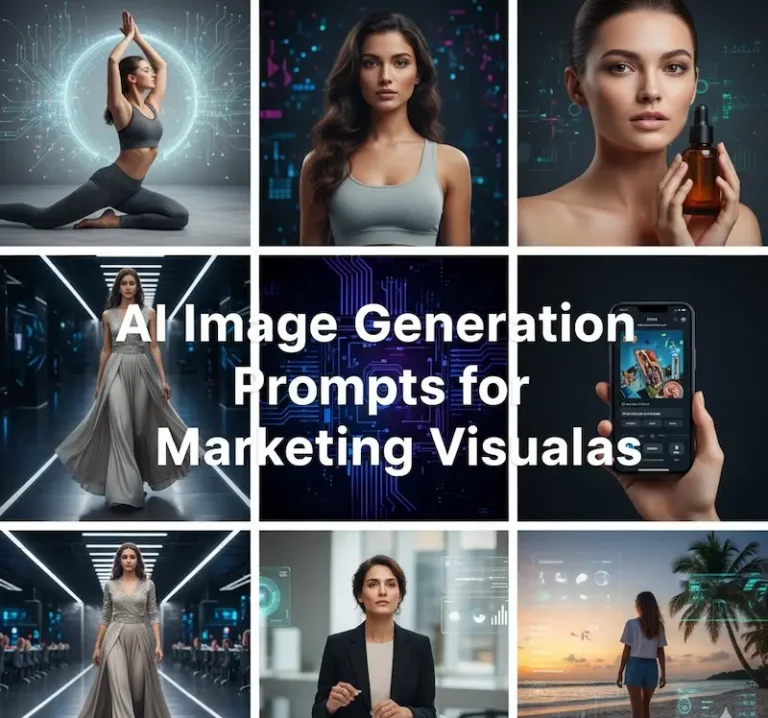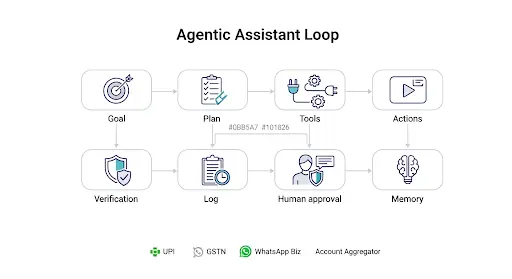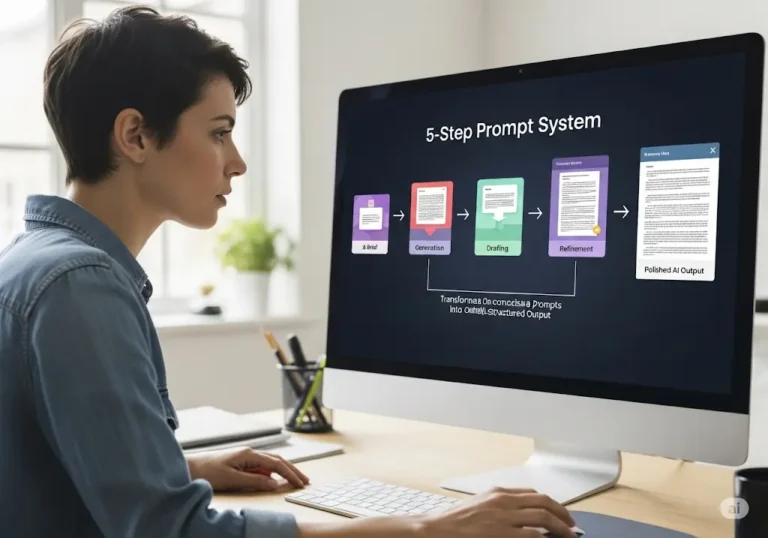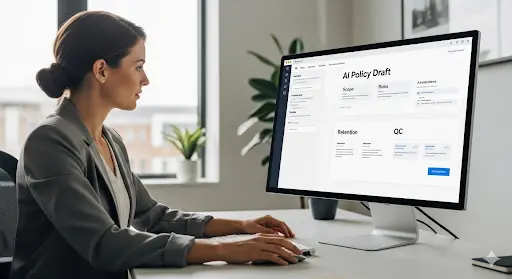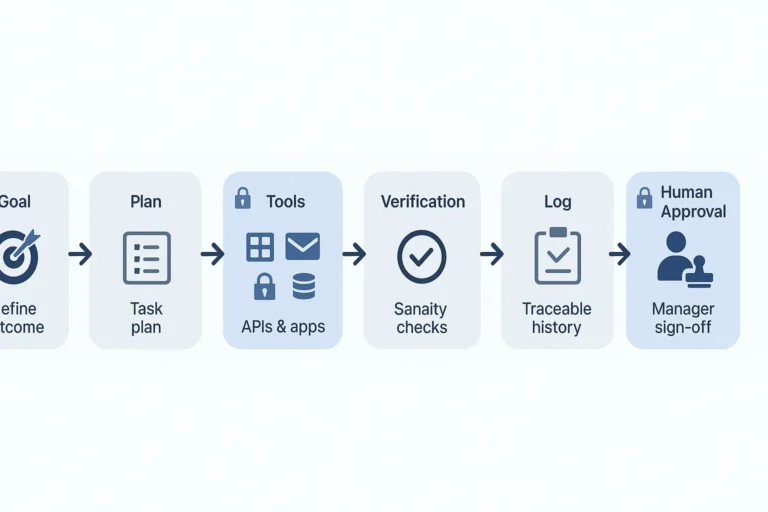AI Prompt Engineering in 2025: The New Professional Literacy
Why Prompts Matter More Than Ever
In early 2020, I asked an AI to “write an article about GST.” The draft was technically correct—and completely unusable. No structure. No audience awareness. I almost wrote AI off as a gimmick.
Fast forward to 2025: I use AI every day—ChatGPT for financial explainers, Claude for long-form reasoning, and Google Veo 3 for quick ad concepts. And I’ve noticed one clear pattern: when the prompt is lazy, the output is lazy. When the prompt is specific, structured, and grounded in the audience, the output is startlingly good.
This AI Prompt Engineering guide is the playbook I share with clients: how to brief AI like a junior teammate, the exact levers that improve quality, and practical examples (including few-shot prompts) you can copy and use today.
The State of Prompting in 2025
Three shifts make prompt engineering a must-have skill now:
- Multimodal tools have arrived. Veo-class models generate video and synchronized audio; prompts must specify what to show, what to say, and how it should feel. In 2025, Google integrated Veo 3 into the Gemini app, making AI video generation widely accessible. Every output now carries both invisible SynthID watermarks and visible “Veo” marks to clearly signal AI-generated media.
- Business dependence is real. Adoption has surged: McKinsey’s 2025 survey reports that organizations using AI in at least one function rose to ~78%, up from ~72% in early 2024. Teams that standardize prompts are capturing the most value.
- Quality pressure has intensified. Platforms are formalizing provenance, regulators are scrutinizing disclosures, and brands are demanding consistency. In my experience, prompt discipline is now as critical as editorial discipline once was.
Why this matters: The difference between an average result and an impressive one doesn’t come from the AI itself—it comes from how you ask. A clear, detailed prompt saves time, keeps the content organized, and ensures the final output is high quality.
Core Principles of AI Prompt Engineering (with Examples)
1) Define the Role (so AI adopts the right voice)
Guidance: Tell the model who to be. A “Chartered Accountant,” “Cinematographer,” or “Senior Editor” instantly narrows vocabulary, tone, and priorities.
Ready prompt (text):
Act as a Chartered Accountant with experience advising small businesses.
Write a blog post on India’s 2025 GST updates in clear, reader-friendly language.
Ready prompt (video concept):
Act as a professional cinematographer.
Generate an 8-second product ad for a smartwatch, with close-up shots, cinematic lighting, and futuristic background music.
In my experience: Role priming reduces randomness and lifts professionalism on the first draft.
2) Be Task-Specific (treat the prompt like a project brief)
Guidance: Specify length, audience, structure, and deliverables. If you wouldn’t brief a human with “write a blog,” don’t brief AI that way either.
Weak prompt: Write a blog about income tax.
Stronger prompt: Write a 1,200-word SEO article about India’s 2025 Income Tax Slabs. Include an introduction, H2/H3 headings, bullet lists, 2 FAQs, and a conclusion with a call-to-action. Target small business owners.
What I’ve learned: Specificity is kindness—to your future self who has to edit.
3) Add Constraints (guardrails improve focus)
Guidance: Constraints (tone, format, duration, must-include points) keep outputs tight and useful.
Ready to use prompt (article):
Write a 600-word article on AI in healthcare.
Tone: conversational but professional.
Include 3 real-world case studies.
End with 2 actionable takeaways for hospitals.
Ready to use prompt (Veo 3):
Generate a 10-second vertical ad for a skincare brand.
Show close-ups of glowing skin, add upbeat background music, and finish with the text overlay: “Shine Naturally – Order Now.”
Pro tip: Constraints reduce rewrites and enforce consistency across a content pipeline.
4) Use Iterative Refinement (don’t restart; nudge)
Guidance: First drafts are drafts. Ask for targeted changes in steps.
- Write a 500-word overview of renewable energy policies.
- Add 2 examples from India (one MSME-focused).
- Rewrite in a conversational op-ed tone.
- Condense into 5 LinkedIn posts with punchy openings.
Key insight: Contrary to what many assume, longer prompts aren’t always better. Shorter prompts plus iteration usually outperform a single overloaded mega-prompt.

Few-Shot Prompts Examples
What it is: AI learns patterns. In few-shot prompting, you give one or two short examples (tone, structure, length), then ask for a new piece in the same style. This is the single best way to lock in voice and presentation.
Few-Shot Prompts for LinkedIn (tone + structure mimic)
Ready-to-copy prompt:
Example A (my style):
Big news for finance teams—automation is finally saving hours without blowing budgets. I’ve seen even small firms streamline monthly closes with simple workflows. What’s one task you’d automate first?
Example B (my style):
Hiring isn’t broken—job descriptions are. In my experience, the clearest roles attract the best people. If you had to remove one line from your JD today, which one goes?
Task:
Write a LinkedIn post about renewable energy for small businesses in the same style as the two examples above—short, professional, conversational, and ending with a question to spark comments. Target 80–120 words.
Why it works: Two samples fix voice, rhythm, and length; the task pins a new topic and audience.
Few-Shot prompts for Veo 3 Ad Scripts ((short ad story structure
Ready-to-copy prompt:
Example Script 1 (8–10s ad scripts of household cleaner):
Intro: “Sticky stains again?” (quick sink close-up)
Problem: “Sprays smear, wastes time.” (messy wipe shot)
Solution: “Switch to PureDrop Tabs.” (tablet fizz, clean surface)
CTA: “Drop. Fizz. Done.” (logo + soft upbeat music)
Example Script 2 (8–10s ads script of smartwatch):
Intro: “Missing moments?” (dim screen, notification missed)
Problem: “Old watches lag.” (slow swipe)
Solution: “Spark X instant alerts.” (screen pops, smooth scroll)
CTA: “Smarter. Faster. Sleeker.” (hero shot, subtle futuristic track)
Task:
Create an 8-second vertical script for eco-friendly toilet cleaning tablets in the same four-beat structure (Intro → Problem → Solution → CTA). Include quick cuts, bright bathroom lighting, upbeat background music, and a friendly voiceover. End on a sparkling bowl + logo.
Why it works: The two mini-scripts encode pacing, shot list, and CTA cadence. Veo 3 understands both structure and mood before you ask for the new ad.
Few-Shot prompts for Financial Summaries (format + readability)
Ready-to-copy prompt:
Example Summary (Quarterly Results – style sample if any)
Intro (2–3 sentences):
Q2 showed steady demand despite soft exports. Cash flow improved and operating costs moderated.
5 highlights:
• Revenue stable QoQ; modest YoY growth
• Gross margin +80 bps on mix discipline
• OpEx flat despite hiring in support teams
• Net cash positive; WC cycle improved
• Guidance maintained; capex focused on core
2 FAQs:
Q: Is growth broad-based?
A: Largely; strongest in services, weaker in exports.
Q: Any risks?
A: FX volatility and input prices remain key watch-outs.
Task:
Summarize the Union Budget 2025 in the same format (intro → 5 concise bullets → 2 FAQs), targeting small business owners. Use plain language, highlight tax changes and compliance updates, and avoid jargon. Optional: Keep to ~600 words.
Why it works: The example locks layout, length, and clarity level. The task swaps in a new topic while preserving digestibility.
Quick Pro Tips for Few-Shot Prompts
- Keep examples short (3–6 lines) but unmistakable in tone/structure.
- Use two examples when you want the model to generalize a pattern, not copy a single sample.
- Always close with a clear task (topic, audience, length, must-include elements).
- If the output drifts, add: “Match the sentence length and line breaks of the examples.”
A Few General Ready-to-Use Prompts
- Prompt 1 (Eco-Friendly Toilet Cleaner): Act as a professional ad scriptwriter. Follow the script format: Intro → Problem → Solution → Call to Action. Create an 8-second vertical video script for eco-friendly toilet cleaning tablets. Add upbeat background music, cheerful narration, and show a sparkling clean bathroom at the end.
- Prompt 2 (Smartwatch Ad): Act as a professional cinematographer. Create a 10-second vertical ad for a smartwatch. Show close-ups of the watch lighting up, futuristic background music, and overlay the tagline: “Smarter. Faster. Sleeker.” End with a hand gesture zoom-out shot.
- Prompt 3 (Diwali Fashion Sale): Act as a creative director. Write an 8-second script for a festive Diwali fashion ad. Scene: A family lighting diyas on the balcony, wearing traditional outfits. Add festive background music and overlay the text: “Celebrate in Style – Shop Now.”
- Prompt 4 (Union Budget): Act as a Chartered Accountant with expertise in financial reporting. Write a 600-word summary of the Union Budget 2025. Format: 2–3 sentence introduction, 5 concise bullet highlights, and 2 FAQs. Target: small business owners. Use simple, non-technical language.
- Prompt 5 (Company Annual Report): Act as a finance analyst. Summarize the Annual Report 2024 of [insert company]. Format: Short intro (2 sentences), 5 key financial highlights, 2 FAQs on growth and risks. Audience: potential investors. Tone: professional but simple.
- Prompt 6 (GST Update 2025): Act as a tax consultant. Summarize India’s GST changes for FY 2025. Format: 2–3 sentence introduction, 5 bullet highlights (with examples), and 2 FAQs at the end. Audience: small retailers and entrepreneurs. Keep it practical and easy to read.

Practical Application: Step-by-Step Playbook
- Step 1 — Pick a template. Decide if you need a blog, ad script, LinkedIn post, or finance brief. Start with one of the prompts above.
- Step 2 — Add specifics. Audience, word count, must-include points, tone, and constraints. For Veo 3, include camera cues, lighting, and soundtrack.
- Step 3 — Iterate in small nudges. Ask for “shorter intro,” “MSME example,” “friendlier tone,” or “sharper CTA.”
- Step 4 — Save winners. Build a shared prompt library (I keep mine in Notion)—your team’s “greatest hits.”
Common pitfalls I see:
- Vague asks like “write a blog” or “make a video.”
- Overloading one prompt with ten objectives (split tasks).
- Skipping audience definition.
- Publishing without fact-checking (AI is confident, not always correct).
Tools I recommend: ChatGPT Playground (role/format experiments), Google Veo/Flow for visual iteration, and a shared prompt doc (Notion/Docs) for reusing best prompts.
For a step-by-step visual, see our Prompt Flowchart Guide that maps these stages clearly
To operationalise these prompts across finance, read AI Survival Skills (India, 2025): AI Skills for Accountants.
Conclusion:
If spreadsheets were the must-have skill of the 2000s, prompt engineering is the must-have skill of 2025. In my experience, the difference between “average” and “outstanding” results isn’t the model—it’s the brief. Define the role, specify the task, add constraints, iterate, and when voice or format matters, use few-shot prompting to show exactly what “good” looks like.
Start with one workflow this week (a blog, an ad, or a summary), then turn the best version into a reusable template of few-shot prompts. AI won’t replace your creativity; it will amplify it—when you know how to ask.
FAQs about AI Prompt Engineering
What is AI prompt engineering in simple words?
Writing clear instructions (role, task, structure, constraints) so AI produces useful, on-brand outputs.
When should I use few-shot prompts?
Anytime voice or format really matters—LinkedIn tone, ad cadence, or report layout—share 1–2 short examples first, then give the task.
Do I need coding skills?
No. Prompting is about clarity and structure, not programming.
Which tools benefit most from prompting?
Text models (ChatGPT/Claude) for articles and summaries; video models (Veo 3) for ad concepts and storyboards; Gemini app features with watermarking via SynthID.
Any disclosure or compliance tips for video?
Plan for provenance. Veo 3 outputs include invisible SynthID watermarking plus a visible “Veo” tag. Many brands now disclose AI-assisted media in captions for transparency.
Sources & References
DeepMind/Google: Veo model overview and SynthID watermarking.
McKinsey (2025): The State of AI—How organizations are rewiring to capture value (survey adoption data).
Google Blog (2025): Google I/O 2025—Gemini app updates (Veo 3, Flow).
Disclaimer
The views expressed in this article prompt engineering are based on my professional experience and publicly available information as of August 2025. While I have personally tested Google’s Veo 3, all tools and features discussed are subject to change by their respective companies. This content is provided for educational and informational purposes only and should not be considered professional, financial, or legal advice.
References to OpenAI, Google, or other companies do not imply endorsement. Always review the official documentation before making business or investment decisions.
If this article contains affiliate links, I may earn a small commission—at no extra cost to you—when you make a purchase. This helps support the creation of valuable content for readers.




